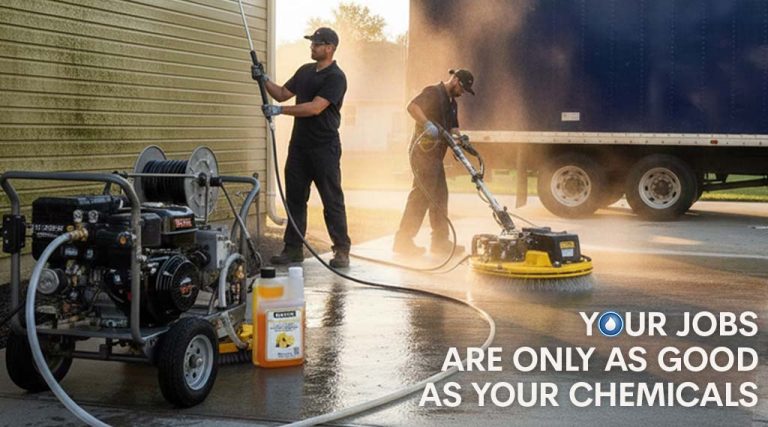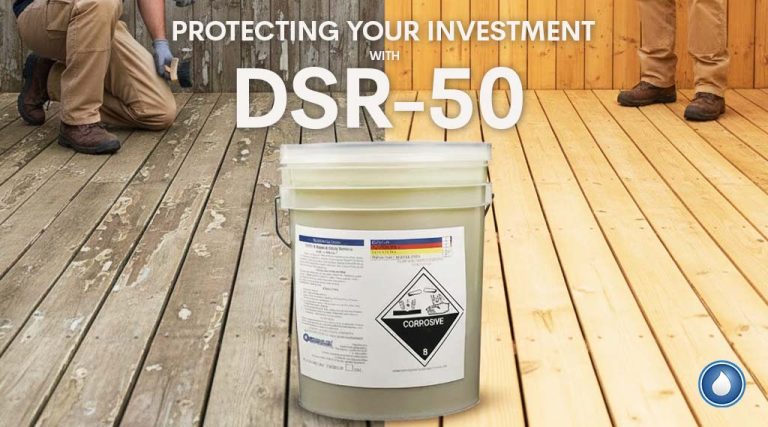- Home
- /
- Power Wash Spray Tips
- /
- Pay Per Click Keyword Management Strategies for Pressure Washing Contractors
Subscribe To Our Newsletter
Stay in the know on the latest products, deals, events, tips & tricks.
Social Media
Pay Per Click Keyword Management Strategies for Pressure Washing Contractors
This article is the second in a four part series of articles on pay per click advertising for power wash contractors. This first article focused on more global changes that you can make to campaigns and ad groups to make sure your ads are being shown at the right time and in the right places. This article will discuss keyword settings. The next article will give tips for ad writing, and the fourth will discuss what should happen after your ad is clicked.
Search ads are triggered by keywords. Many people start with long keyword lists and try to get their ad in front of as many people as possible. Strategic pay per click keyword management will help your ads get in front of the right people.
Use Long Tail Keywords
Keywords like <power washing> are way too broad for most power washing contractors. People who type <power washing> into a search field could be looking for <power washing advice> or <power washing supplies>. Neither of these searches should show an ad for power wash contracting companies. Long tail keywords are groups of words. Phrase snippets that are more specific than individual words. <wood deck washing service> would be a better choice. Long tail keywords are more like a fishing lure than a fishing net. They will catch the people who are really searching for what you offer. This will help your ad rank because your ads will be more closely related to the user’s search.
Use Keyword Match Types
Keyword match types (sometimes called keyword modifiers) are special tags that you can add to your keywords to make them more specific. These modifiers are the key to a successful ppc strategy. There are four types of keyword modifiers.
-
- Broad match keywords are the default setting.
-
- If your keyword is <power washing services> your ad may show for <power washing equipment> or even <janitorial services>
-
- Broad match searches can be modified with a plus sign (+) before any word in your phrase. This action lets search engines know that that word should be in the search, but the other words can still change. So if we said <+power washing services>, our ad would show in searches for <power washing contractors> or <power tools>
-
- Broad match keywords are the default setting.
-
- Phrase match keyword modifiers tell search engines to match your ad to a specific phrase. They are surrounded by quotation marks (“your phrase”).
-
- If you use a phrase match for “power washing services” your ad might show up in searches for <cheap power washing services> or <power washing services in Dallas, Texas”
-
- Phrase match keyword modifiers tell search engines to match your ad to a specific phrase. They are surrounded by quotation marks (“your phrase”).
-
- Exact match keywords will show your ads only when a search matches a phrase or a close variation of your phrase with nothing before or after. They are surrounded by [brackets].
-
- Use them carefully. If you use exact match keyword [power washing contractor] your ad will only show for that search and maybe <pressure washing contractor>
-
- Exact match keywords will show your ads only when a search matches a phrase or a close variation of your phrase with nothing before or after. They are surrounded by [brackets].
-
- Negative keyword modifiers tell search engines to never show your ad for a particular keyword. They are marked with a minus symbol (-).
-
- Use them if you discover that your ads are appearing in unrelated searches. For example, a truck washing company may not want to appear in searches for <car wash>. They wash big rigs, and RV’s. This is probably not the place where most people would want to bring the family car. So we could use the minus sign with the keyword <-car wash> to try and stop some of those searches.
-
- Negative keyword modifiers tell search engines to never show your ad for a particular keyword. They are marked with a minus symbol (-).
A low click through rate means that your ads are not matching search queries. A perfect score would be one click for one impression. A 2% click through rate is a more realistic target. Keep your keyword groups really focused. Pause keywords with low quality scores. Use Google’s “Ad Preview and Diagnosis” tool to test your keywords. Aim for the most relevant searches for the highest quality clicks.
Share This Post
More To Explore
Winter Pressure Washing Maintenance Checklist
Winter Pressure Washing Maintenance Checklist Prepared for Contractors by PowerWash.com. Winter is the most important time of year to protect ...
2025 Tax Changes, New Rigs & Easy Payments: What Power Washing Pros Need to Know Before Dec 31
Updated for the latest federal guidelines. PowerWash.com does not provide tax advice. Always consult your CPA. As the year comes ...
Your Jobs Are Only as Good as Your Chemicals: Here Are the Ones That Stand Out
If your busy season has you running from job to job, you already know this: the equipment you use matters, ...
Stripping Wood the Smart Way (Not the Hard Way)
Deep Wood Restoration Made Simple with DSR-50 Whether you’re a professional deck and fence restoration contractor or a homeowner prepping ...




